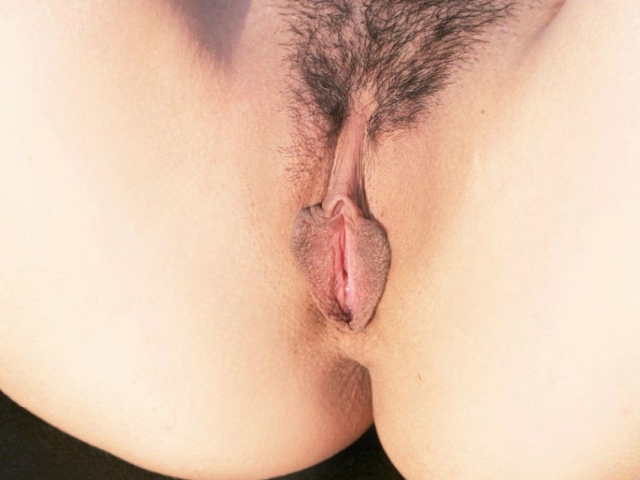Yoni Puja
In short and abstract terms, a Yoni Puja can be defined as a sacred ritual
during which the yoni is worshipped. This can occur by using a sacred sculpture,
a painting, or a sanctified natural object as focus of veneration, or by worshipping
the yoni in her living form - with the help of a woman. In any case, the worshipper
engages in one-pointed meditation on, or visualization of, the thus venerated
representation of the Goddess. In practical reality, however, and in the religious
practice that is still very much alive in present-day India, a Yoni Puja is
a much more detailed, strange (to some), intimate (to others) or hardly believable
(again to others) manner of religious worship; a ritual that goes back thousands
of years, yet one that is still practiced today.
Longer Meditative version Here
Many are the actual forms this ritual can take in practical detail. Considering the vastness of India, and the multi-sectarian nature of what is called Hinduism, this is quite understandable and should come as no surprise. There are, however, several ritual elements, and a very clear symbolism, that constitute a kind of blueprint for the Yoni Puja, in whatever local variety it may appear.
There are several basic subdivisions of what is called the
Yoni Puja. There are Inner and Outer pujas, and each of these can
occur in either an ordinary or a secret form. Apart from this, again,
the Yoni Puja is subdivided into three categories, each of which
can be indicated by one of the following terms: adoration, magic,
and meditation; with the latter being the most secret one. Inner,
in this context, refers to the fact that the practice is being done
inside one's head, using visualization, rather than visibly in the
outer, material world. Outer, of course, then refers to a visible
ritual of one or more persons before an object or a woman. The latter
type of Yoni Puja is often performed in mixed groups, although sometimes
only women or only men may be attending.
Elemental symbolism such in in this example, permeates all
or most forms of worship in India. In other types of puja, different
materials are used, yet with the same underlying symbolism. Any traveler
to India will have seen pujas performed in which actual fire and
water are used together with burning incense (smell, earth), a peacock
feather (air) and a conch-shell (sound, ether) that is blown continuously
amidst the sounds of many bells and cymbals. Equally, those attending
a puja will usually offer five different fruits or other substances
to the deity, thought to present in the sculpture; things such as
milk, flower petals, rice or whatever. So we can see that the Yoni-puja,
in that regard, is completely embedded in mainstream Hinduism; however
special and secret it may otherwise be. In a Yoni Puja performed with a living women, indicated by
the terms stri puja and rahasya puja, the merits of the practice
depend on the type of woman who takes part. How strong the transference
of power is, from the yoni via the liquid materials to the participants,
is very much dependent on the woman who serves as the focus of worship.
Of all stri pujas, the most simple or 'low' level worship is that
of a young girl of 16; known as Kumari Puja.
Again, the powers transferred from her Yoni are comparatively weak when compared
with those of the woman who is the channel of power in an even 'higher' type
of practice. Here, at the summit of all Yoni Pujas, the woman representing
the Goddess is a true and full-fledged guru and in this case, the powers transferred
from her Yoni to those who worship are most strong and most suited to raise
the consciousness of those who take part in this ceremony, to those who eat
or drink the mixture of liquids that have been purified and empowered by contact
with her naked yoni, her flame of intelligence.
Above, when I mentioned local or sectarian varieties as opposed
to basic structure, I was referring mainly to changes in the succession
of steps and actions taken. Somewhere, someone, may start with the
element earth rather than ether, or enact fire before water. These
differences, however, as every intelligent reader will recognize,
do not really matter. What matters is the dedication and single-minded
attention of the practitioner(s), combined with the attraction inherent
in the object of veneration. It is this combination which enables
the raising of one's awareness and which provides the potential for
liberation inherent in these rituals. What is further needed, naturally,
is the ability to do all of this with a deep love and respect for
the specific powers of women, for the seat of life, for the Goddess. Other Tantrics, embracing and utilizing ALL manifestations
of life in order to find enlightenment, often go much further. Also
here, in a religion that the researchers and scholars of the early
20th century often found too 'shocking' to report honestly, the Yoni
Puja is known, though in some texts we find mention of it under alternative
names such as bhagayagya. Besides the obvious - that a unique and
special one-pointedness can be achieved by contemplative concentration
on the Yoni - it becomes clear from sacred texts such as the Yoni
Tantra that the major aim of a Yoni Puja is the ritual creation of
a subtle energy and/or liquid that is called yonitattva, or, during
menstruation, yonipuspa .
Sometimes, this type of Yoni Puja is also celebrated with a menstruating woman, producing an even more powerful liquid, known as yonipuspa (Skt., flower of the Yoni). Although this is a practice forbidden by most texts and within many sects, it is specifically advocated in the above mentioned Yoni Tantra. |






